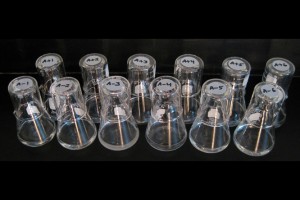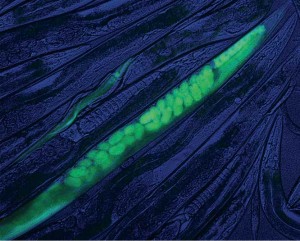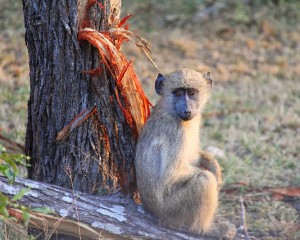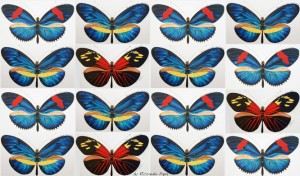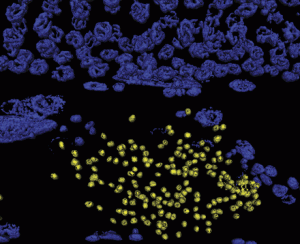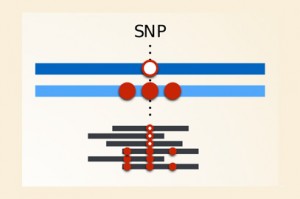Enter your address to receive notifications about new posts to your email.
Science & Publishing
-
Science & Publishing
2015 GSA Award Essays
Check out the Genetics Society of America award winners’ essays in the July issue of GENETICS! The awardees share inspiration, observations, and predictions about their fields. Nominations are now open for the 2016 GSA awards through September 18. Edward Novitski Prize Sue Biggins Under Tension: Kinetochores and Basic Research “It is […] easy to…
-
Science & Publishing
New faces at Genes to Genomes: Sarah Bay and Kayleigh O’Keeffe
The Genetics Society of America and the GSA journals are pleased to welcome two new science writing interns to our team! Meet Sarah Bay and Kayleigh O’Keeffe; you’ll be seeing a lot of their writing right here at Genes to Genomes. We asked them to tell us a little about themselves: Sarah Bay: I’m a rising sixth year…
-
Science & Publishing
G3 Meeting Report: Experimental Approaches to Evolution and Ecology Using Yeast and Other Model Systems
Directly observing evolution in nature is often impossible. But biologists who use experimental systems to study these processes have the luxury of observing the fine details directly, controlling the conditions, and even replicating the results. In the age of genomics, experimental approaches to ecology and evolution have become particularly powerful for genetic model systems, including…
-
Science & Publishing
Worm101: Caenorhabditis elegans educational Primer
In time for the 20th International C. elegans Meeting, GENETICS has published the next in its series of model organism education Primers. Ann Corsi, Bruce Wightman, and Marty Chalfie introduce Caenorhabditis elegans and the many features that make it an outstanding experimental system. The authors describe the basic biology, genetics, anatomy, genomics, ecology, and evolution…
-
Science & Publishing
Turning spit and data into treasure
By the time President Obama announced the Precision Medicine Initiative in January 2015, the Genetic Epidemiology Research on Adult Health and Aging (GERA) cohort was already a trailblazing example of this new approach to medical research. GERA is a group of more than 100,000 members of the Kaiser Permanente Medical Care Plan who consented to…
-
Science & Publishing
Thousands of BRCA1 variants tested by deep mutational scanning
Patients seeking certainty in genetic tests, such as tests for inherited susceptibility to cancer, often receive a perplexing result. Many people learn they carry a “variant of unknown significance” of a disease-linked gene. Such variants might—or equally might not—increase disease risk. In the latest issue of GENETICS, Starita et al. characterized nearly 2000 variants of…
-
Science & Publishing
June GENETICS Highlights
The June issue of GENETICS is out now! Check out the Highlights below or the full Table of Contents here. ISSUE HIGHLIGHTS Cortical folding of the primate brain: an interdisciplinary examination of the genetic architecture, modularity, and evolvability of a significant neurological trait in pedigreed baboons (Genus Papio), pp. 651–665 Elizabeth G. Atkinson, Jeffrey Rogers,…
-
Science & Publishing
The molecules behind mimicry
The vibrant passion-vine butterfly species Heliconius erato doesn’t taste as good as it looks. The flesh of this South and Central American species accumulates toxic compounds to discourage would-be predators, who quickly learn to associate the butterflies’ unpleasant taste with their bold red warning colors and patterns. But H. erato isn’t the only species that…
-
Science & Publishing
New in G3: Mosquitoes, cotton, & CYCLoPs
Check out the June issue of G3! MEETING REPORT Meeting Report on Experimental Approaches to Evolution and Ecology Using Yeast and Other Model Systems Audrey P. Gasch and Gaël Yvert G3 June 2015 5:1021-1023; Early Online April 22, 2015, doi:10.1534/g3.115.018614 Full Text | Full Text (PDF) INVESTIGATIONS Analysis of RNA Interference Lines Identifies New Functions…
-
Science & Publishing
Cover contest: Immune Repertoires
In 2014, the GSA journals launched a contest inviting image submissions related to genetics and genomics. The winning entry was created by Jian Han, of the HudsonAlpha Institute for Biotechnology, and appears on the cover of the May 2015 issue of G3. We talked with Dr. Han about the striking image: What does the image…
-
Science & Publishing
The trouble with HLA diversity
The most diverse of all human genes encode a set of proteins at the frontline of our immune system. Many different Human Leukocyte Antigen (HLA) proteins are encoded by genes clumped together in one portion of the human genome known as the major histocompatibility complex region. HLA proteins sit on the surface of cells and…




